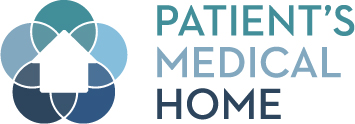Healthcare Professions: Have we lost sight of family medicine’s value under this barrage of contempt?
This article is translated with permission of Dr. Maxine Dumas Pilon:
By Maxine Dumas Pilon, president chair of the QCFP February 4, 2016
Comment from the Québec College of Family Physicians
A great deal has been said on the topic of family medicine over the course of the last year. The value of our specialty has been overshadowed by scathing remarks denouncing corporate interests and physician laziness. Leon Zitrone once said that “It doesn’t matter whether people say good or bad things about me. The main thing is that they talk about me!” Mr. Zitrone likely did not have much to lose when making this comment. The opposite is true when it comes to our healthcare system and, ultimately, our society, should we do not take a moment to seriously consider the issues surrounding our specialty.
Scientific literature has begun producing several fascinating articles revealing certain aspects that are more or less intuitive. Below are a few examples of these articles examined from the perspective of the Patient’s Medical Home (PMH), a flagship vision of the College of Family Physicians of Canada (CFPC) that focuses on the organisation of primary care practice.
The PMH vision is supported by ten pillars:
- Patient-Centred Approach
- Personal Family Physician
- Team-Based Care
- Timely Access
- Comprehensive Care
- Continuity of Care
- Electronic Medical Records
- Education, Training and Research
- Evaluation and continuous improvement
- System Supports
In this article, we will focus on the second and sixth pillars.
A family physician for every citizen – But why?
The second pillar emphasises the importance of having a personal family physician. Is this corporate propaganda? The CFPC seems to have, instead, been influenced by the abundance of scientific literature on the subject. Numerous articles have clearly demonstrated that systems that invest more into primary care produce superior health results for their populations, and at a lower cost.
Barbara Starfield has documented this phenomenon in several publications.1, 2 In a more recent report, Nielsen et al. indicated that models such as the PMH are generally associated with a reduction in overall costs, better use of healthcare services, improved access to care, and greater patient and clinician satisfaction.3
Kurt C. Stange approaches the phenomenon from a different angle in his article entitled “The Paradox of Family Medicine.”4 He explains that studies show that physicians from other specialties consistently surpass family physicians in studies where quality of care is measured by the application of disease specific guidelines. However, in studies that define quality of care according to health results, family physicians produce the same results as their peers in other specialties, and at a lower cost; hence the famous paradox.
Offering patient-centred comprehensive care by integrating several social determinants of health, mental health issues or, for some, spiritual aspects, could perhaps favour family medicine over so-called “disease-specific” approaches.
Other factors could also explain the phenomenon. Bazemore et al. have demonstrated that family physicians with higher levels of comprehensiveness (defined here as a broader field of practice encompassing, for example, office and emergency department management) are less costly for the system and reduce hospitalisation.5 A family physician managing the same client population both in a clinical setting and in hospital quickly comes to understand the importance of keeping their patients stable outside the hospital setting, and will learn how to achieve this, to avoid having to treat the same patient in the emergency department!
This particular study is of even more important within the context of current discussions on Medical Staffing Plans or PEMs (Plans d’effectifs médicaux). Within a comprehensive vision of healthcare, it would clearly be more beneficial to train more family physicians than physicians of other specialties, while also supporting the former in maintaining a broader field of practice.
The Cornerstone: The Patient-Physician Relationship
Continuity of care is another key element, which is why the CFPC recognises it as one of its pillars. Hollander et al. analysed this issue by measuring patient attachment to a given practice. Their measurement corresponds to the notion of attendance within current policy jargon. In their initial 2009 study, they demonstrated that attachment was, again, associated with a decrease in costs and hospitalisation for patients with diabetes and heart failure.6 In 2014, they extended their study to eight chronic diseases and arrived at the same conclusions where costs were concerned.7
What are the most important variables in explaining the impact of attendance on hospitalisations and costs? The notion of coordination must be central, but the patient-physician relationship is significantly more crucial. It is likely this knowledge and mutual trust that guides the precision of our diagnoses, treatment adherence and, perhaps, our tolerance to risk. However, demonstrating the value of this relationship, its nature, impact, role, and strength remains a complex task that is inevitably imperfect.
If we are, in fact, interested in the quality of care offered to patients, and in the value of a specialty, then it would be wise to explore the literature that studies it. Family medicine is undoubtedly a valuable asset for population health, and it would be a shame to lose sight of this because of negative media coverage. The PMH is a proven model. Let us support our teams and physicians so that they can use it to model their practices and offer the best possible care to the population.

